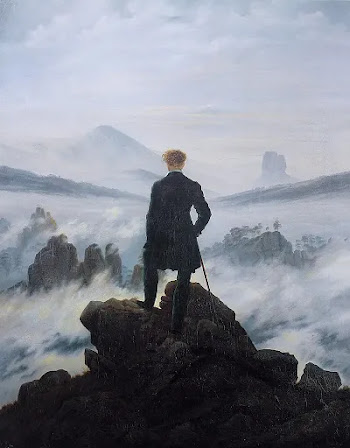Art in the Great Depression
 |
| White Angel Breadline, by Dorothea Lange (1933) taken in San Francisco |
Early modern period artwork and the great depression that influenced much of it is full of society's self-reflection on its place in nature as well as the industrial revolution.
The Great Depression was a time of widespread severe economic strife in the 1930s United States. Naturally, as art tends to express the experience of a society or group, art came to reflect those economic struggles.
White Angel Breadline is a photograph taken of one of the breadlines that were common during the Depression. The photo shows both the young and old crowded together for what food can be provided. The pattern of the photo is broken up by a single man facing the other direction, which creates a focal point on him. Normally this kind of pattern breaking may be to show a difference, but here it just further illustrates the message present in the rest of the photograph. The man is wearing a old and very worn hat, with a dejected look on his face. Seeing him, one can imagine the sullen attitudes of all those standing around him.
 |
| Industrial Composition, by Robert Gilbert (1932) painted in the U.S. |
 |
| Sunday Morning in Grand Coulee, by Vanessa Helder (1939-1941) painted in the U.S. |
Today, F. A. (2022, June 23). The Depression Era: American Paintings and photographs. Fine Art Connoisseur. https://fineartconnoisseur.com/2019/08/depression-era-american-paintings/
Northwest Museum of Arts + Culture. (n.d.). Sunday morning in Grand Coulee (Spokane Art Center instructors... Northwest Museum of Arts + Culture. https://www2.northwestmuseum.org/exhibits/d-sunday-morning-in-grand-coulee-493.htm
Google. (n.d.). White Angel Breadline, San Francisco - Dorothea Lange - Google Arts & Culture. Google. https://artsandculture.google.com/asset/white-angel-breadline-san-francisco-dorothea-lange/_gFDeColaEWX2Q



I love all the pieces you've chosen for your blog! I agree that the man facing the other direction in the White Angel Breadline is really unique. I get a feeling that the line is moving extremely slow and the man is unexcited. The Industrial Composition seems like a wonderful piece at first glance with all the bold colors. However, as I read your description that factories and productivity have been placed above people, it changed my perspective. It showed that during The Great Depression, citizens were not prioritized but factories were.
ReplyDelete